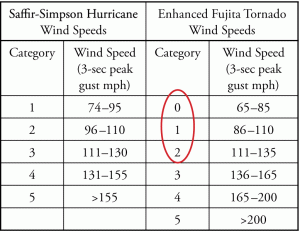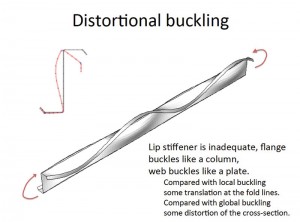In the past few years, building for natural disasters – already a consideration for structural engineers – has been thrust into the public eye after recent tornados wiped out entire cities and took many American lives. Moore, Okla., Joplin, Mo., and Tuscaloosa, Ala. are all recent examples of areas that have experienced the greatest losses, both in infrastructure and human life. Engineers in the construction industry work to stay aware of these challenges when setting out to build safe, strong and durable buildings for tenants and occupants.
This year, the NCI Building Systems annual engineering seminar was focused on building design and the strength needed to withstand natural disasters such as hurricanes, tornados and earthquakes. The training conference, open to engineers throughout the U.S., attracts top researchers in fields relevant to steel construction. Lectures at the seminar were given by William L. Coulbourne, P.E., an expert in building design for tornados, Tom Murray, Ph.D., P.E, professor emeritus in structural steel design, and Chris Moen, Ph.D., P.E., who offered insights into the rapidly developing Direct Strength Method for designing building components.
Building for Tornados
William L. Coulbourne is a national expert in wind and flood mitigation, and has been involved in FEMA Mitigation Assessment Teams and natural hazard damage assessments for close to 20 years. He has become intently focused on building design for tornados after the recent devastating touchdowns in Ala., Mo. and Okla., and he shared new research in his keynote address at the engineering seminar.
Tornados are classified by the National Weather Service in very much the same way as hurricanes: by the most extreme damage they can find anywhere in the storm’s path, even if only a small percentage of the area affected reaches that extreme. In most cases that Coulbourne has studied, the wind speeds in each tornado’s path have been EF-0 (65-85 mph), an EF-1 (86-109 mph), or an EF-2 (110-137 mph), which are comparable to hurricane wind speeds up to a Category 3. As a point of reference, new homes along large portions of the Texas coast are built to withstand hurricane force-winds up to 130 miles per hour.
Coulbourne suggests that the same practices used for hurricane wind resistance could be applied in tornado alley. Translating the same awareness of natural disasters and application of stringent building codes during the design process has the potential to significantly improve the safety of homes, businesses and human lives in the event of a tornado. Practices such as creating load path continuity from the roof-to-wall connections through to the floor-to-foundation connections and installing laminated windows to minimize airborne missiles should be used when rebuilding a home damaged by a tornado, and when considering new construction in a high-risk area.
The two most frequent failures during a tornado are roofs lifting off their frames and homes being pushed off their foundations. A significant increase in the preservation of buildings and homes in tornado alley could be possible with a focused approach to the mechanical connections that attach roofs to walls, walls to floors, and floors to the foundation. Current building codes in tornado alley require connections be made with only nails alone, but Coulbourne recommends metal connectors be used for optimal strength and wind resistance, up to 130-135 mph.
“If we could do something for hurricane-like wind speeds in places that get impacted by tornados, while everybody may not have the same level of protection and there could still be fatalities, we could reduce damage and improve the ability for people to survive to a huge extent,” Coulbourne said. “For example, 83 percent of the area affected by the Joplin tornado was an EF-0, 1 or 2. This corresponds to wind speeds represented by Category 1-3 hurricanes. If we look at the wind speeds of the actual tornado events (mostly EF-2s or lower) and compare it to wind speeds we design for along hurricane-prone coastlines, I feel confident we can come up with some solutions that will work.”
A new approach to building for tornados would have its most obvious impact in the safety of building occupants, but it would also make a massive difference in the futures of the towns themselves. Coulbourne notes that when a city has been hit by a tornado, families historically have moved to surrounding towns or wherever family and friends can help them get back on their feet. Families put down roots in these new towns, and as the population of the original hometown shrinks, the tax base shrinks and it becomes harder for the city to rebuild what is left, making it more unlikely that residents would ever return. A solution that spared more homes and basic infrastructure could preclude such a scenario.
In any discussion related to construction for tornados, Coulbourne stresses that infinitely more important than salvaging a building is the goal of saving lives. Another building option in preparing for extreme weather is to install a reinforced area where people can go to be safe in the event of a tornado.
“If you want to be confident you’ll be protected, put in a shelter,” he said. “Instead of spending the money to make a whole building resistant to tornados, consider putting in a safe room. This is especially important in schools. Most teachers take the children into the hallway, but unless the hallway walls and roof are hardened, there is still a chance the roof may fall on the kids. In a scenario like that, an alternative solution is not to build the whole building better, but instead invest in a safe room, so if the unlikely event of a tornado happens, human lives will still be saved.”
Building for Earthquakes
For many years, the basic intent of the building code seismic provisions has been to provide buildings with an ability to withstand intense seismic activity without collapse, even in the event of significant structural damage. The protection of life safety, through the avoidance of earthquake-induced collapse, remains the primary goal of U.S. building codes today. An understanding of ductility is required to accomplish this goal in building design. Ductile structures are capable of sustaining large amounts of damage without significant degradation in strength or development of instability and collapse. Steel in particular is a highly ductile building material, as it can allow significant damage to the structure (such as beams bending and buckling) before a full collapse. The damage can help to reduce the earthquake loading on the building by changing its response characteristics. With this understanding, the engineer is tasked to control the locations of damage in a building leading up to collapse, while making sure that collapse does not occur before sustaining prescribed levels of load.
Most of the damage used to control collapse is near the beam-to-column connections. Several types of connections have been studied and understood in their role to control collapse. The Metal Building Manufacturers Association (MBMA) has been studying metal building connections, including prequalified connections, for several years in an effort to understand their behavior for seismic applications.
Tom Murray, professor emeritus of structural steel design at Virginia Tech, discussed the testing requirements for prequalifying connections for special and intermediate steel-moment frames for seismic applications. In order to be prequalified, these connections must attach beams to columns while maintaining a flexural resistance at a story drift angle of 0.04 radians, at 80 percent of the nominal strength of the connection. Tests can be conducted specifically for a project or for a representative type of connection. The connections Murray addressed are the bolted moment connections described in AISC documents as prequalified for certain materials and geometric limitations. He also discussed the permitted test sub assemblages used and the cyclic testing protocols.
Metal buildings are particularly resilient in earthquakes because of their typically low height and light weight. They have a history of good performance in earthquakes and are considered one of the safest materials to build with in earthquake-prone regions. Demonstrating the positive attributes of metal buildings through calculations has been the task at MBMA for the past several years. Research on metal building systems has been performed at the University of California at San Diego, and research on related bracing requirements has also been performed at Georgia Tech University.
MBMA has been sponsoring this research in an effort to document metal building behavior for seismic applications. Lightweight, low-rise buildings have performed well with thin elements. As the industry presses into higher and heavier buildings, the thicker elements and prequalified connections Murray described will become more frequent in use. They are an important piece of the puzzle in understanding and extending the use of metal buildings for seismic implications.
Direct Strength Method
Cris Moen, associate professor of civil engineering at Virginia Tech, shared his expertise on the American Iron and Steel Institute’s direct strength method (DSM) for cold-formed steel design, which provides an easier way to predict the strength of building components (studs, joists) and systems (sheathed walls, roofs). Compared to the Effective Width Method used before it, the DSM does not require iteration or effective section properties; instead, a cross-section elastic buckling analysis is performed, which can be accomplished with hand calculations or computer-aided numerical analysis, for example the freely available software CUFSM. The DSM approach can be found in AISI-S100-12, Appendix 1, North American Specification for the Design of Cold-Formed Steel Members, and is even applicable to members with perforations.
There are three types of buckling limit states evaluated in the DSM: local, global and distortional. Local buckling involves primary plate buckling within a cross-sectional element between fold lines. Global buckling (or Euler buckling) is when a member bends and rotates simultaneously within an unbraced length. Finally, distortional buckling occurs in joists and studs with an open cross-section as restrained flexural-torsional buckling of a compressed lip-stiffened flange.
“The direct strength method is a new and innovative way for cold-formed steel engineers to conceptualize and predict the behavior of cold-formed steel members and systems,” Moen said. “The approach has quite a few advantages, compared to the current method engineers are accustomed to using. As a whole, it is easier to use and a more accurate predictor of capacity because of improved mechanics and the fact that the focus of the calculation is cross-section buckling modes instead of effective width for individual elements. It covers all buckling modes in one method, and complex cross sections are treated consistently throughout the process. Lastly, the DSM brings roof and wall panel, sheathing and insulation to member design.”
The seminar brought up some thought-provoking topics in engineering. These new findings can directly impact the thought processes engineers go through during building design. While much has already been tested and proved, continued research in these areas is vital in order for engineers to create the strongest and safest buildings possible.▪


